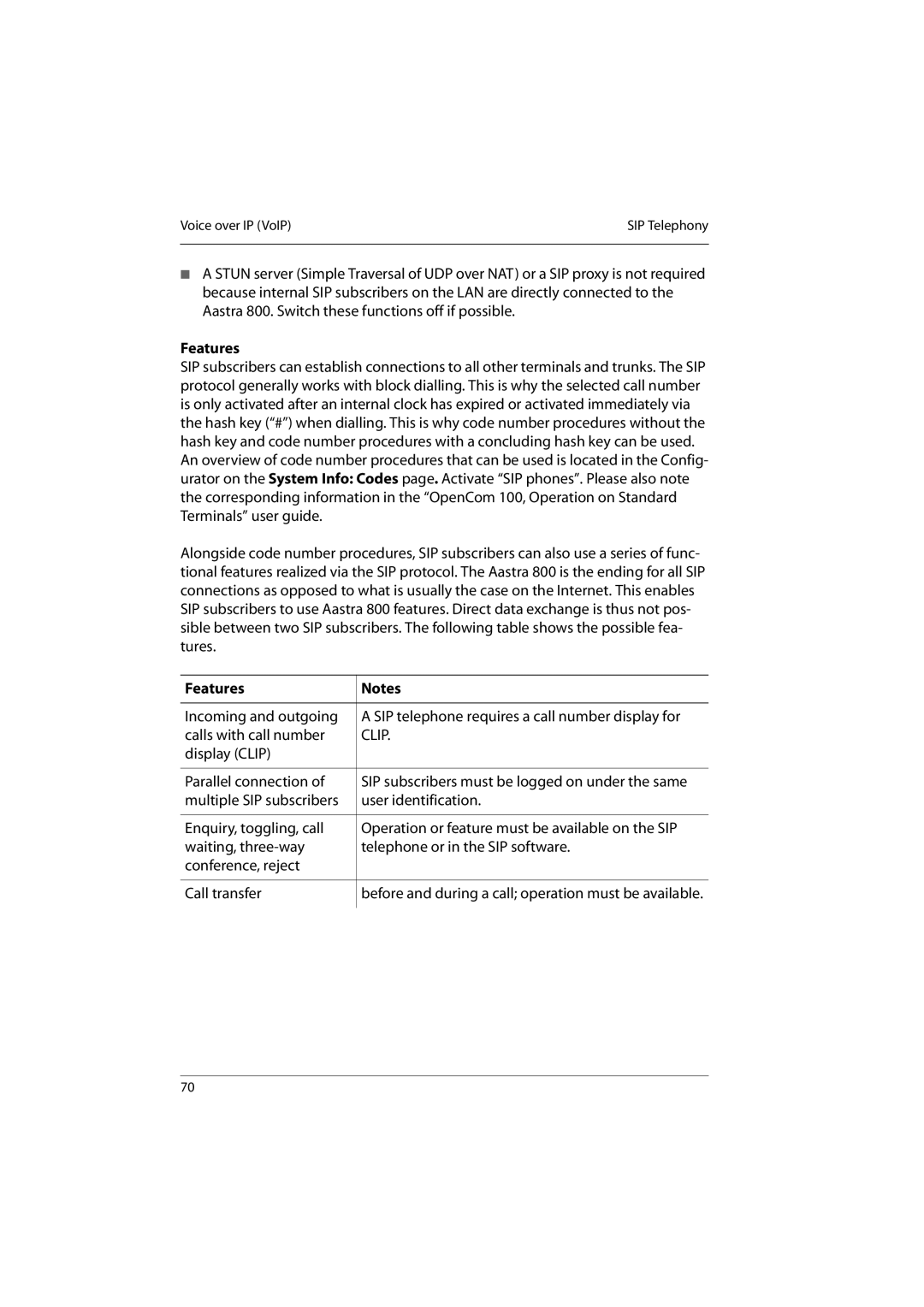Voice over IP (VoIP) | SIP Telephony |
|
|
■A STUN server (Simple Traversal of UDP over NAT) or a SIP proxy is not required because internal SIP subscribers on the LAN are directly connected to the Aastra 800. Switch these functions off if possible.
Features
SIP subscribers can establish connections to all other terminals and trunks. The SIP protocol generally works with block dialling. This is why the selected call number is only activated after an internal clock has expired or activated immediately via the hash key (“#”) when dialling. This is why code number procedures without the hash key and code number procedures with a concluding hash key can be used. An overview of code number procedures that can be used is located in the Config- urator on the System Info: Codes page. Activate “SIP phones”. Please also note the corresponding information in the “OpenCom 100, Operation on Standard Terminals” user guide.
Alongside code number procedures, SIP subscribers can also use a series of func- tional features realized via the SIP protocol. The Aastra 800 is the ending for all SIP connections as opposed to what is usually the case on the Internet. This enables SIP subscribers to use Aastra 800 features. Direct data exchange is thus not pos- sible between two SIP subscribers. The following table shows the possible fea- tures.
Features | Notes |
|
|
Incoming and outgoing | A SIP telephone requires a call number display for |
calls with call number | CLIP. |
display (CLIP) |
|
|
|
Parallel connection of | SIP subscribers must be logged on under the same |
multiple SIP subscribers | user identification. |
|
|
Enquiry, toggling, call | Operation or feature must be available on the SIP |
waiting, | telephone or in the SIP software. |
conference, reject |
|
|
|
Call transfer | before and during a call; operation must be available. |
|
|
70
